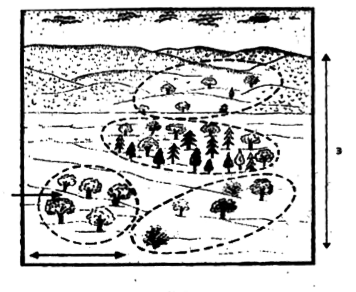An electron micrograph of a plant cell shows two different types of them is known to store oils and fats in them, such a plastid is known as :
Chloroplast
Chromoplast
Elaioplast
Amyloplast
The correct Answer is:C
To solve the question regarding which type of plastid in a plant cell is known to store oils and fats, we can follow these steps:
1. Understand the Types of Plastids:
- Plastids are organelles found in plant cells and are involved in the storage and synthesis of various substances. The main types of plastids include:
- Chloroplasts: Contain chlorophyll and are involved in photosynthesis.
- Chromoplasts: Contain pigments that give color to fruits and flowers.
- Leucoplasts: Colorless plastids that store nutrients.
2. Identify the Function of Each Plastid:
- Chloroplasts: Involved in photosynthesis; they contain chlorophyll.
- Chromoplasts: Store pigments (like carotenoids) that provide color to plants; they do not store oils or fats.
- Leucoplasts: These can be further divided into different types:
- Amyloplasts: Store starch (a carbohydrate).
- Elaioplasts: Specifically store oils and fats.
3. Focus on the Requirement of the Question:
- The question specifically asks for the plastid that stores oils and fats. From our understanding, we know that Elaioplasts are the type of leucoplast that serves this function.
4. Select the Correct Answer:
- Based on the information gathered, the correct answer to the question is Elaioplast.
Final Answer:
The plastid known to store oils and fats in a plant cell is called Elaioplast.
---
- Plastids are organelles found in plant cells and are involved in the storage and synthesis of various substances. The main types of plastids include:
- Chloroplasts: Contain chlorophyll and are involved in photosynthesis.
- Chromoplasts: Contain pigments that give color to fruits and flowers.
- Leucoplasts: Colorless plastids that store nutrients.
- Chloroplasts: Involved in photosynthesis; they contain chlorophyll.
- Chromoplasts: Store pigments (like carotenoids) that provide color to plants; they do not store oils or fats.
- Leucoplasts: These can be further divided into different types:
- Amyloplasts: Store starch (a carbohydrate).
- Elaioplasts: Specifically store oils and fats.
- The question specifically asks for the plastid that stores oils and fats. From our understanding, we know that Elaioplasts are the type of leucoplast that serves this function.
- Based on the information gathered, the correct answer to the question is Elaioplast.
The plastid known to store oils and fats in a plant cell is called Elaioplast.
Topper's Solved these Questions
Similar Questions
Knowledge Check
Plant cells store fat in
APeroxisomeBLysosomeCSphaerosomeDMicrosomePlant cells store fat in
AperoxisomesBsphaerosomesClysosomesDmicrosomeWho among them is known as tool maker?
AHomo erectusBHomo habilisCJava manDPeking man
What are different types of taxes and name them .
View SolutionA plant introduced from a different country is known as
View SolutionCapacity of a plant cell to give rise to whole plant body is known as
View SolutionDifferent types of diversity are shown in the figure. Identify them.

View SolutionWhen a plant produces two kind of spores the condition is known as
View Solution
